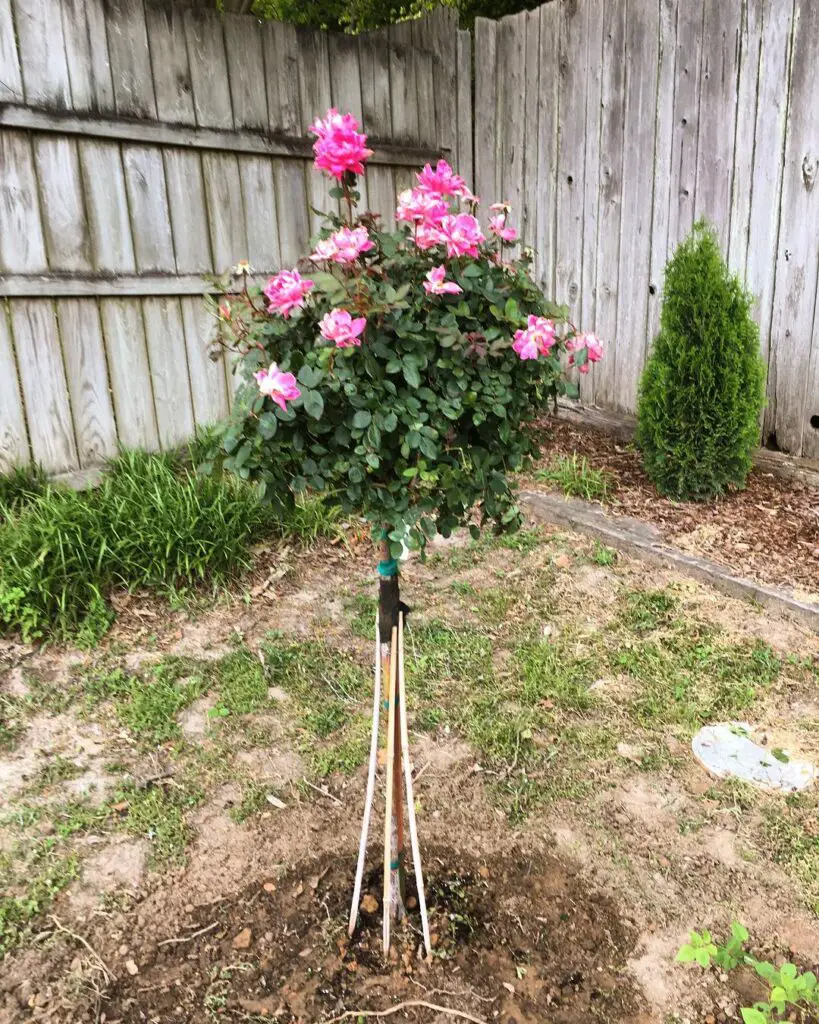How To Prune A Rose Topiary: Sculpting Nature’s Elegance
Imagine strolling through a garden where every rose bush resembles a work of art, meticulously crafted into elegant shapes and forms. This is the allure of rose topiaries, where gardening meets artistic expression. Pruning a rose topiary is more than just trimming—it’s a delicate dance of shaping and nurturing, turning ordinary shrubs into botanical sculptures that captivate the eye and elevate garden aesthetics.
In the world of horticulture, mastering the art of pruning is akin to wielding a sculptor’s chisel. Each snip of the shears is deliberate, guiding the growth of the rose plant to form intricate patterns and designs. From classic spirals to whimsical animal shapes, the possibilities with rose topiaries are limited only by creativity and care. Whether you’re a seasoned gardener or a novice enthusiast, learning how to prune a rose topiary allows you to engage with nature in a uniquely artistic way, transforming your garden into a living gallery of floral beauty.

How To Prune A Rose Topiary
We’ll discuss the topic step by step. So, bear with us, and let’s dive into it:
What is a Rose Topiary Tree?
A rose topiary tree is a meticulously pruned rose plant that is trained to grow in a tree-like form, often resembling a miniature tree with a single trunk and a rounded or tiered canopy of foliage and flowers. This artful technique involves careful pruning and shaping, starting from a young rose bush. By selectively trimming the branches and stems, gardeners encourage the plant to develop a structured framework, enhancing its aesthetic appeal and creating a focal point in gardens or landscapes.
These topiary creations can vary in size, from small tabletop versions to larger specimens that stand several feet tall. Popular rose varieties used for topiary include Hybrid Tea roses, which offer large, solitary blooms ideal for showcasing in a tree-like structure. Grandiflora and Floribunda roses are also favored for their compact growth habits, making them suitable candidates for shaping into elegant topiary forms.
Maintenance of a rose topiary tree requires regular pruning to maintain its shape and encourage new growth. Proper care, including feeding and pest management, is essential to ensure the health and longevity of these ornamental plants, which can thrive for many years with the right attention and care.

Pruning Techniques for Rose Topiaries
Pruning a rose topiary is an art that requires precision and patience to achieve stunning results. Here’s a step-by-step guide to mastering this delicate technique:
1. Selecting the Right Tools:
Before you begin, gather sharp bypass pruners and gloves to protect your hands from thorns. Clean tools prevent the spread of diseases between plants.
2. Timing is Crucial:
Prune your rose topiary during its dormant season, typically in late winter or early spring, when the plant is not actively growing. This ensures minimal stress on the plant and encourages healthy regrowth.
3. Start with Structural Pruning:
Remove any dead, damaged, or crossing branches to create an open framework. This allows for better air circulation and sunlight penetration, reducing the risk of disease.

4. Shaping the Topiary:
Decide on the desired shape—whether it’s a cone, sphere, or spiral—and prune accordingly. Use guiding strings or templates if necessary to achieve symmetrical results.
5. Precision Trimming:
Trim back lateral branches to promote new growth and maintain the desired shape. Cut just above an outward-facing bud at a 45-degree angle to encourage outward growth.
6. Monitor and Maintain:
Regularly inspect your rose topiary throughout the growing season. Remove any new growth that detracts from the shape or structure you’ve established.
7. Feed and Water Appropriately:
After pruning, apply a balanced fertilizer to nourish the plant. Water deeply to encourage strong root development and overall health.
By following these pruning techniques, you can transform a standard rose bush into a striking topiary that enhances your garden’s beauty and charm.

Benefits of Rose Topiary
Rose topiaries aren’t just beautiful additions to a garden; they offer several practical benefits that enhance both aesthetics and plant health.
Enhanced Aesthetic Appeal:
Rose topiaries elevate garden landscapes with their sculptural forms, adding a touch of elegance and sophistication. Their structured shapes stand out amidst traditional garden flora, creating focal points and enhancing overall visual appeal.
Space Optimization:
Topiaries, including those made from roses, allow gardeners to maximize space efficiently. By training roses into vertical or compact shapes, such as spirals or pyramids, they occupy less horizontal space while still providing vibrant blooms.
Improved Air Circulation and Sunlight Penetration:
Properly pruned rose topiaries promote better air circulation within the plant canopy. This reduces the risk of fungal diseases like powdery mildew and enhances sunlight penetration to lower leaves, ensuring healthier growth and bloom production.
Longer Bloom Periods:
Topiary pruning techniques encourage continuous flowering throughout the growing season. By strategically trimming spent blooms and shaping new growth, gardeners can extend the period of vibrant rose blooms, providing consistent beauty from spring to fall.
Ease of Maintenance:
Contrary to their intricate appearances, rose topiaries are relatively low-maintenance once established. Regular pruning not only maintains their shape but also encourages robust growth and prevents overgrowth, reducing the need for extensive trimming later on.
Versatility in Design:
From formal gardens to modern landscapes, rose topiaries offer versatility in design. They can complement various architectural styles and garden themes, serving as focal points, border accents, or even as standalone art pieces in large containers.
Environmental Benefits:
Well-maintained rose topiaries contribute to overall garden biodiversity by attracting pollinators such as bees and butterflies. Their structured forms also provide nesting sites and shelter for beneficial insects, supporting a balanced ecosystem within the garden environment.

Frequently Asked Questions
1. What are the best rose varieties for creating topiaries?
Rose varieties that are ideal for topiary include those with flexible stems and compact growth habits, such as Hybrid Tea, Floribunda, and some varieties of Grandiflora roses. These types respond well to pruning and shaping, allowing for intricate designs in topiary forms.
2. How often should I prune a rose topiary?
Pruning frequency depends on the growth rate and desired shape. Generally, light maintenance pruning can be done throughout the growing season to maintain shape and encourage new growth. A more significant pruning session, focusing on structural adjustments, is typically done in late winter or early spring before new growth begins.
3. What tools do I need to prune a rose topiary?
To prune a rose topiary effectively, you’ll need sharp bypass pruners for precise cuts, hedge shears for shaping larger areas, and possibly a small saw for thicker branches. Clean tools are essential to prevent disease spread, so disinfect them between plants if necessary.
4. How can I encourage healthy growth after pruning?
After pruning a rose topiary, provide adequate water and nutrients to support new growth. Consider applying a balanced fertilizer formulated for roses to promote healthy foliage and blooms. Additionally, monitor for pests and diseases, as early detection and treatment can prevent setbacks in growth and appearance.
Conclusion
Pruning a rose topiary transforms gardening into an art form, where each cut shapes not just the plant but the entire garden’s aesthetic. By mastering the techniques of pruning—whether for maintaining shape or fostering new growth—gardeners can create stunning botanical sculptures that delight and inspire.
Through careful attention and the right tools, a rose topiary becomes more than a plant; it becomes a testament to skillful cultivation and artistic vision, enhancing outdoor spaces with timeless elegance and natural beauty. Embrace the art of pruning and watch as your garden blooms into a living masterpiece of floral craftsmanship.

I’m Shofi, a passionate gardener and blogger. I have 10+ years of experience in gardening and hold certifications in horticulture and garden design. I share my knowledge and skills through my garden blog to inspire and educate others on the joys of gardening. I try to provide valuable information and create a community for gardeners of all levels to connect and learn. My ultimate goal is to inspire others to start their own gardens and connect with nature.

